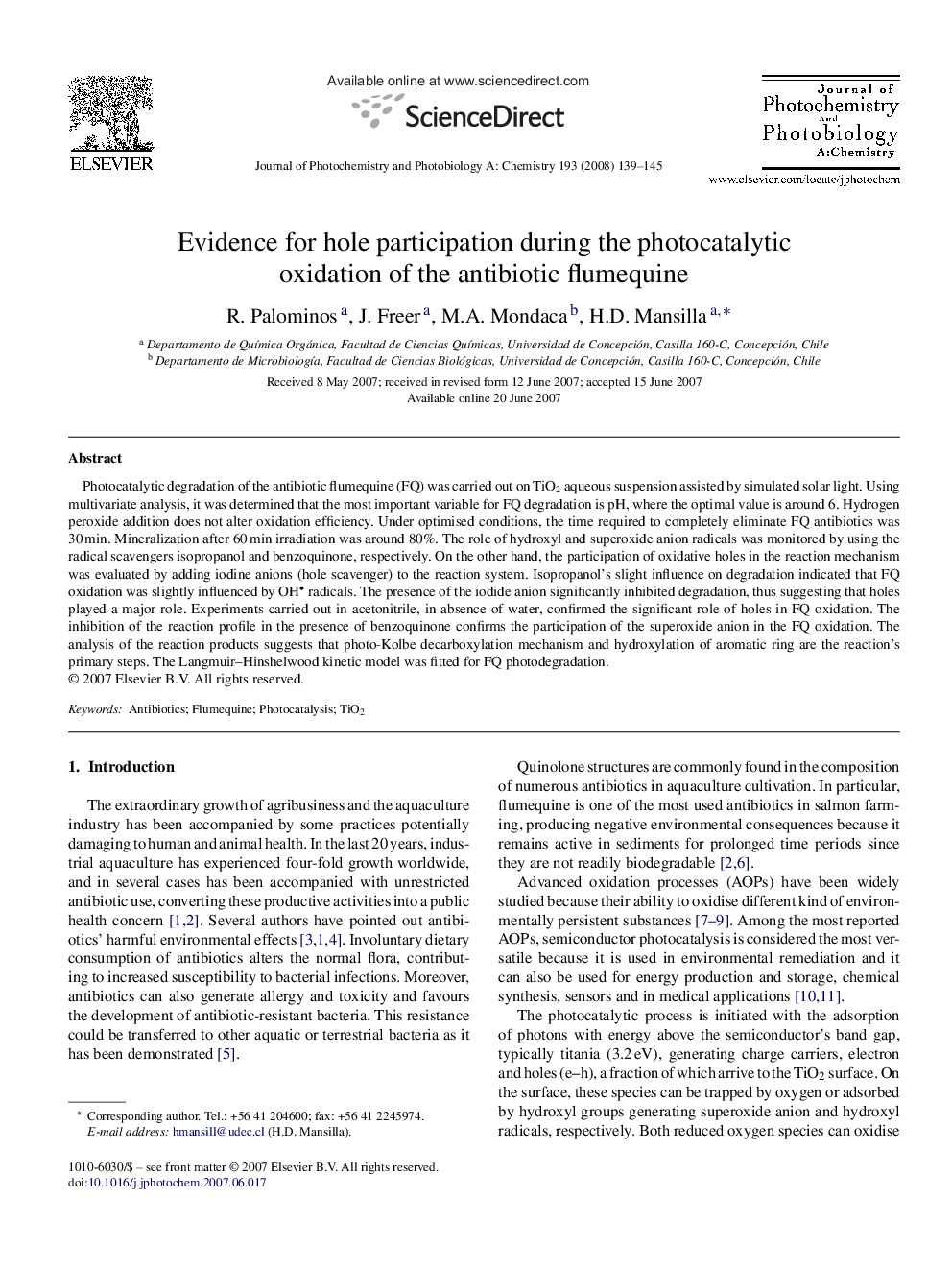| Article ID | Journal | Published Year | Pages | File Type |
|---|---|---|---|---|
| 27769 | Journal of Photochemistry and Photobiology A: Chemistry | 2008 | 7 Pages |
Photocatalytic degradation of the antibiotic flumequine (FQ) was carried out on TiO2 aqueous suspension assisted by simulated solar light. Using multivariate analysis, it was determined that the most important variable for FQ degradation is pH, where the optimal value is around 6. Hydrogen peroxide addition does not alter oxidation efficiency. Under optimised conditions, the time required to completely eliminate FQ antibiotics was 30 min. Mineralization after 60 min irradiation was around 80%. The role of hydroxyl and superoxide anion radicals was monitored by using the radical scavengers isopropanol and benzoquinone, respectively. On the other hand, the participation of oxidative holes in the reaction mechanism was evaluated by adding iodine anions (hole scavenger) to the reaction system. Isopropanol's slight influence on degradation indicated that FQ oxidation was slightly influenced by OH radicals. The presence of the iodide anion significantly inhibited degradation, thus suggesting that holes played a major role. Experiments carried out in acetonitrile, in absence of water, confirmed the significant role of holes in FQ oxidation. The inhibition of the reaction profile in the presence of benzoquinone confirms the participation of the superoxide anion in the FQ oxidation. The analysis of the reaction products suggests that photo-Kolbe decarboxylation mechanism and hydroxylation of aromatic ring are the reaction's primary steps. The Langmuir–Hinshelwood kinetic model was fitted for FQ photodegradation.
